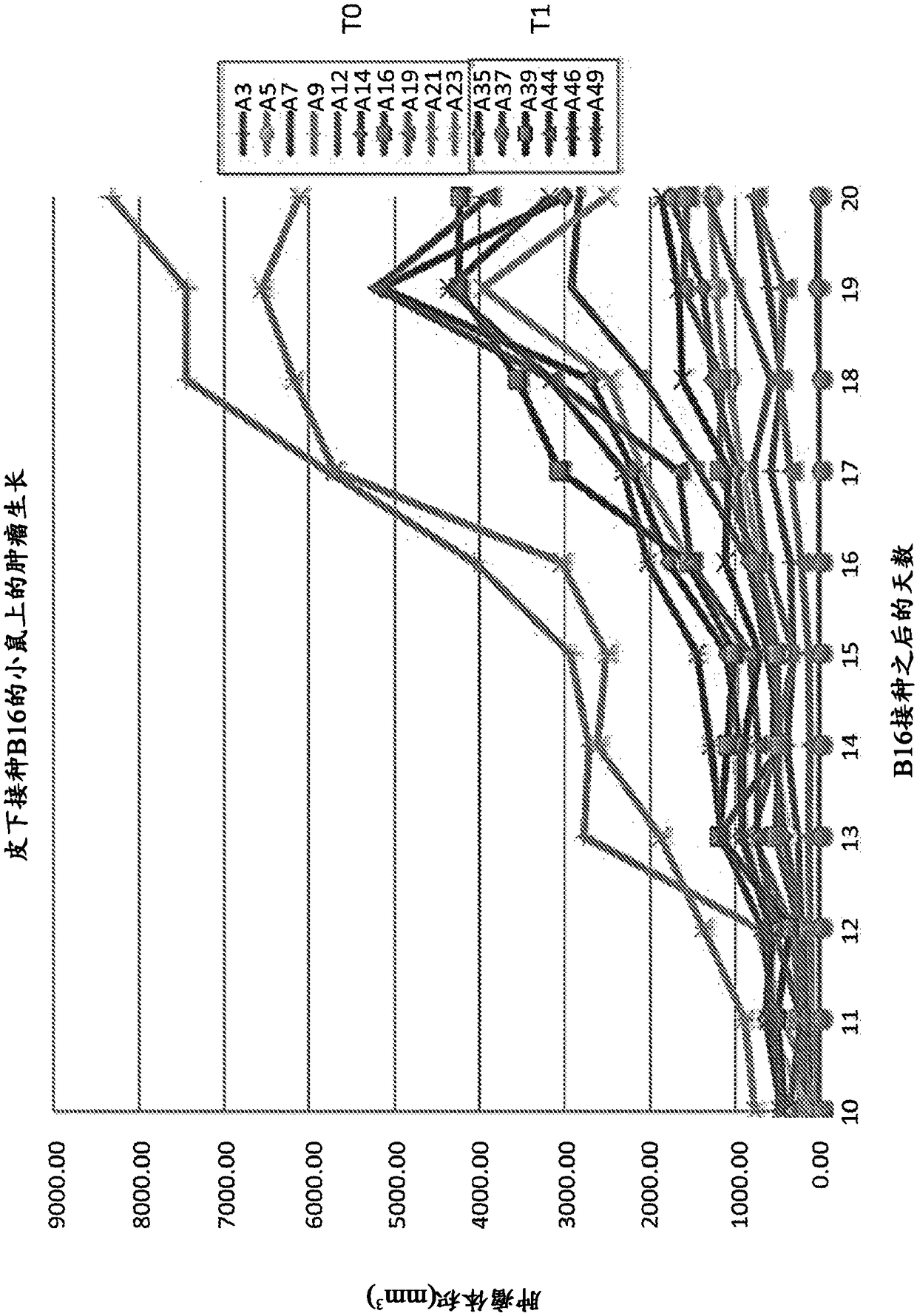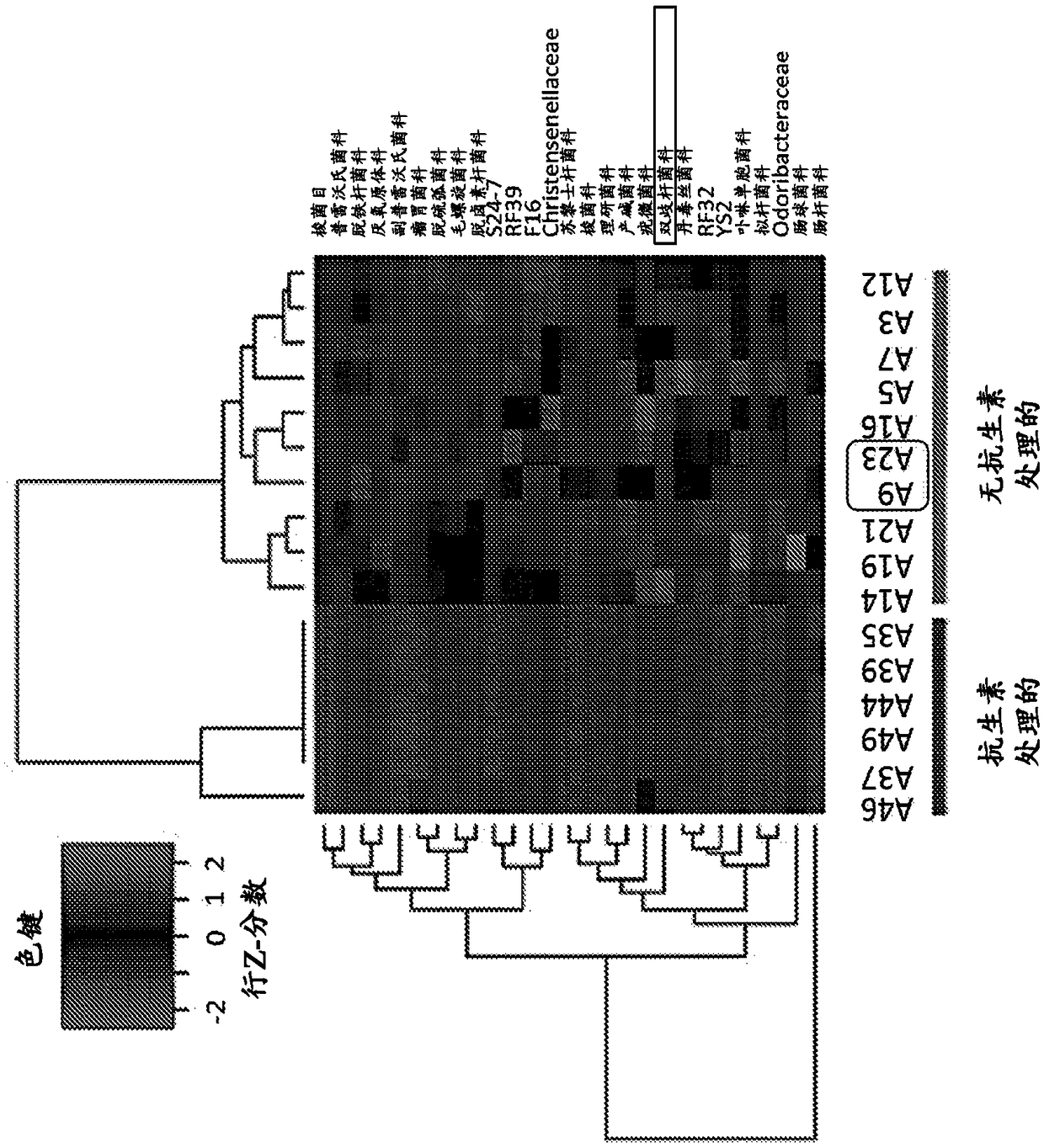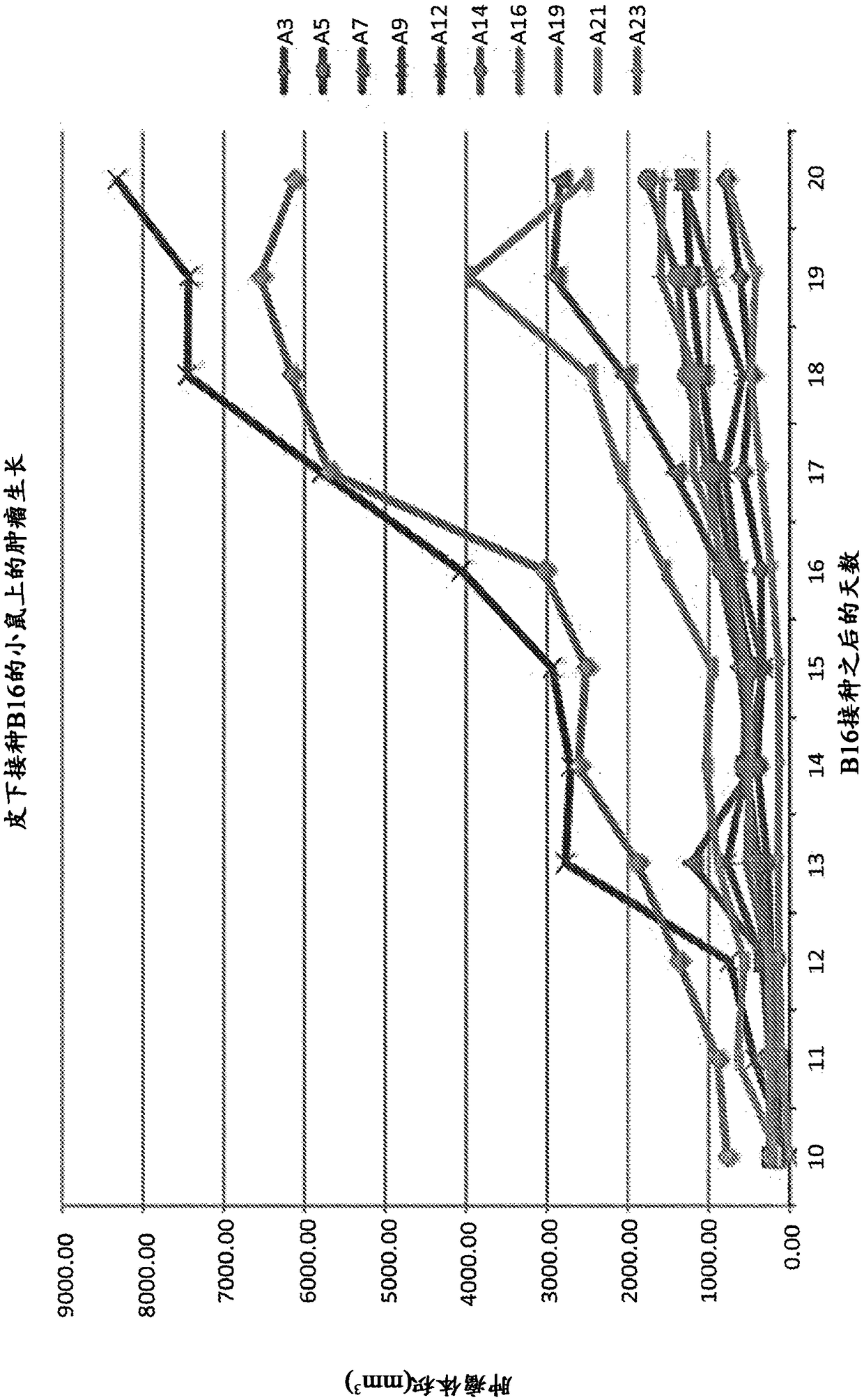Anti-cancer oncolytic virus combination therapies and elite responder selection platforms
An oncolytic virus and selective technology, applied in viruses, anti-tumor drugs, gene therapy, etc., can solve the problems of low remission rate of anti-cancer therapy and lack of anti-tumor immunity in patients
- Summary
- Abstract
- Description
- Claims
- Application Information
AI Technical Summary
Problems solved by technology
Method used
Image
Examples
Embodiment 1
[0057] Example 1 – Gut microbiome experiments
[0058] A. Isolation of microbial strains
[0059] Isolation and Purification of Prajna's Microorganism Strains
[0060] Purification of specific strains by isolation of single bacterial colonies from bacterial cultures. The starting probiotic material containing several strains was serially diluted and cultured on solid agar plates. These plates contain well-separated colonies from which individual colonies are picked, each representing a single strain. Each picked colony was streaked onto a fresh plate and incubated at 37°C for 24-72 hours (depending on the strain) to allow new single colonies to form. This process is repeated several times to ensure that the bacteria within the colony are derived from a single clone. The final colonies were used to amplify selected strains.
[0061] B. Microorganism culture
[0062] Device Setup and Configuration
[0063] To start the anaerobic culture, fill the culture chamber of ...
Embodiment 2
[0097] Example 2 - Preparation of Oncolytic Viruses for Animal Injection
[0098] A. Adenocarcinoma human alveolar basal epithelial cell line A549 culture
[0099] Thaw A549 cells
[0100] By adding 2x 10 6 Frozen vials of cells / ml were transferred from the liquid nitrogen tank to a 37°C water bath to thaw A549 cells (Prajna code: C1; originally obtained from the BeNa Culture Collection, Cat# BNCC337696). Cell culture medium (10% FBS in DMEM) was warmed in a 37°C water bath. Thoroughly wipe the surface of the vial with 75% alcohol. The vial was opened in a cell culture hood and transferred to a 1.5 ml sterile tube with a P1000 pipette. Slowly add 10 ml of pre-warmed cell culture medium and centrifuge at 230 xg for 5 minutes at room temperature (RT). Pour off supernatant and resuspend cells in cell culture medium. cells at 0.7-2 x 10 6 Cell density per bottle was seeded to 75cm 2 flasks and placed in a 37°C cell culture incubator to allow cell growth. The culture m...
Embodiment 3
[0117] Example 3 – Eliminate the influence of gut microbes on tumor growth
[0118] To assess the suppressive function of the gut microbiota on tumor growth, an assay was developed showing that Bifidobacterium abundance was associated with slower tumor progression. C57BL / 6 mice were divided into two groups: T0: not treated with antibiotics; T1: treated with antibiotics. Mice in both groups were housed in our SPF facility for 4 days, treated with or without antibiotics for 2 weeks, and then inoculated subcutaneously with 10E6 B16-F10 cells. Tumors were measured daily starting from day 10 after inoculation. Fecal pellets were collected two weeks after B16 inoculation. The data showed that tumors on T1 mice generally grew faster than most T0 mice ( figure 1 ). This suggests that elimination of gut microbes enhances tumor growth, and further implies that microbes can suppress tumor progression.
[0119] Evaluation of different microbial genera using high-throughput 16S rRNA...
PUM
 Login to View More
Login to View More Abstract
Description
Claims
Application Information
 Login to View More
Login to View More - R&D
- Intellectual Property
- Life Sciences
- Materials
- Tech Scout
- Unparalleled Data Quality
- Higher Quality Content
- 60% Fewer Hallucinations
Browse by: Latest US Patents, China's latest patents, Technical Efficacy Thesaurus, Application Domain, Technology Topic, Popular Technical Reports.
© 2025 PatSnap. All rights reserved.Legal|Privacy policy|Modern Slavery Act Transparency Statement|Sitemap|About US| Contact US: help@patsnap.com



